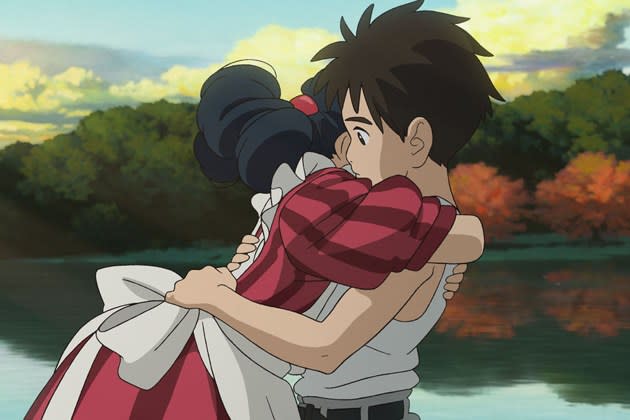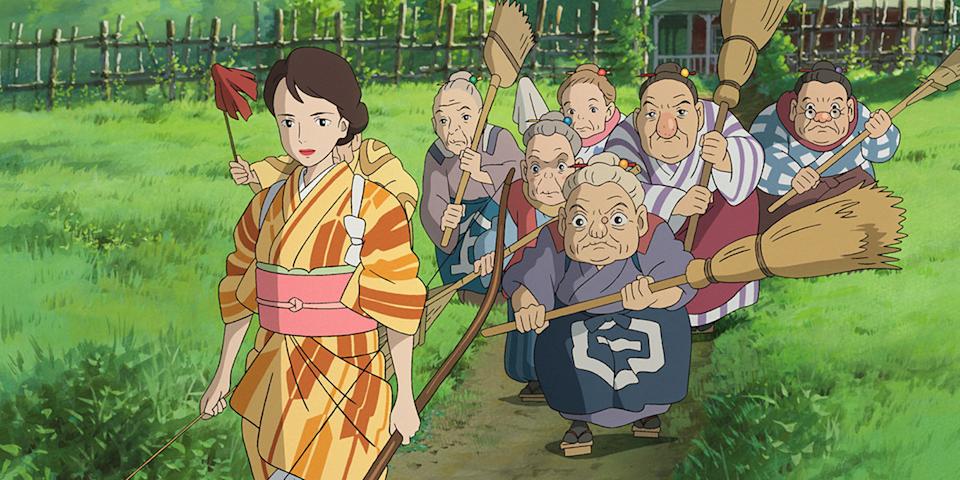‘The Boy and the Heron’ Proves That Hayao Miyazaki Is the Greatest Animator Alive
- Oops!Something went wrong.Please try again later.
- Oops!Something went wrong.Please try again later.
- Oops!Something went wrong.Please try again later.

There are those who were confused upon reading the announcement that the Toronto International Film Festival would kick off its 48th edition with The Boy and the Heron, from the Japanese animator Hayao Miyazaki. And then there are those who heard that this latest — and possibly the last — movie made by this 82-year-old artist would be TIFF’s opening-night selection, and understood exactly why this was the correct choice. While animation is still viewed as inferior to live-action in many quarters, by people who should know better — or dismissed as simply a fancy of way of saying “cartoons” (as if cartoons somehow needed a mark of creative legitimacy) — it remains an art form that both contributes to and draws from a larger pool of sound and vision. “It is not a genre,” no less than Guillermo del Toro said, when he accepted an Oscar for his version of Pinocchio. “Animation is cinema.”
Cinema is why we’re here at festivals like TIFF, suffering the slings and arrows of shut-outs and long lines and King Street’s critical-mass mobs in front of the venues, in order to celebrate and/or chase the high of great filmmaking. And it is virtually impossible to overstate the influence that both Miyazaki and Studio Ghibli, the production company he cofounded in 1985, have had on moviemakers, moviegoers, and the medium in general. It was appropriate that del Toro was brought out during the opening-night preamble by the festival’s CEO Cameron Bailey, a fellow Ghibli superfan, to wax poetic about the man’s legacy. “We’re lucky to be living in a time in which Mozart is composing symphonies and Van Gogh is painting,” the writer-director said. “Miyazaki-san is working on that level.”
More from Rolling Stone
Lil Nas X's Documentary Premiere Briefly Delayed by Bomb Threat at Toronto Film Festival
'Dream Scenario' Is Bald Nicolas Cage's Cancel-Culture Nightmare
Nickelback Doc 'Hate to Love' Is the Nickelback of Rock Docs
Watching The Boy and the Heron, the animator’s 12th feature and his inspiration for coming out of retirement, it’s hard not to agree with The Shape of Water filmmaker. A fable-like story of a tween named Mahito who, like many of Miyazaki’s resourceful and endlessly curious youngsters, must go on a hero’s journey and reckon with the adult world, it’s a typical cinematic phantasmagoria of surreal imagery, cuddly-to-creepy creatures, excitement, sorrow, space, silence, and emotional currents that run leagues deep. “Typical” for the creator behind it all, of course, as there’s rarely anything that fits that descriptive in a Miyazaki film. The lines between fantastic and prosaic, accessible and idiosyncratic, childs’ play and complexity get blurred in his work, and this is no exception. It’s simply, like so much of his filmography, exceptional compared to everything else. No one needed further proof that he’s a master. This meditation on grief and growing up does solidify the position, however, that Miyazaki remains the greatest living animator today, period.
“We were two years into World War II when my mother died,” Mahito (voiced by Soma Santoki) informs us at the output. “We were three years into World War II when my father and I moved out of Tokyo.” It was during the firebombing of a hospital that the boy’s mom, a nurse, burned to death — a sequence that the movie shows us via a nightmarish swirl of flames, chaos, agony, and floating embers drifting by. The lad and the dad head to the countryside, with the older man’s factory switching to manufacturing the cockpit structures of fighter planes. This widower also plans to remarry. The fact that his new wife is Natsuko (Yoshino Kimura), the boy’s aunt, and she’s already pregnant with what will be Mahito’s new brother or sister, only makes him feel more alienated from his new surroundings.
Enter the heron. A pesky seabird that has a knack for showing up at awkward moments and swooping perilously close to Mahito, he seems to be nudging the kid toward something he wants to share. Eventually, the object of his attention is a tower, somewhat decrepit and apparently deserted. The heron slips in and out of its narrow windows, peering out at the boy, but he can’t find a place to enter that isn’t blocked. Eventually, this elegant bird starts to talk to Mahito, in a voice that sounds like Tom Waits after chain-smoking cloves for four days. Your mother isn’t dead, he tells him. I can take you to her. And then, mysteriously, Natsuko goes missing. She was last seen by both Mahito and the gaggle of biddies that work at the country estate walking into the woods, toward the tower….

There was little-to-no advance marketing or publicity for The Boy and the Heron before its release in Japan, other than a cryptic poster; on the strength of Miyazaki’s name, the film still managed to break records in his home country. The idea was that he wanted audiences to discover the story on their own, and there’s the sense that saying too much about what happens after Mahito is once again lured toward this ominous tower will break some sort of spell. We can ponder aloud that in the director’s films, sometimes animals may have hideous-looking trolls lurking inside them, ready to slip the bonds of their species-specific disguises. That comment about Mahito’s mom being alive may be true, false, or both. The dead may walk among us, or occupy their own realm that’s remarkably similar to that of the living. Pirates and Parakeet Kings, ancestors and younger versions of characters, adorable balloon-like creatures (think tiny albino Totoros) and killer armies of budgies all weave in and out of the story, one which eventually reveals itself to be about life, death, and rebirth. Just not necessarily in that order.
What is less important about The Boy and the Heron than the details of its numerous narrative detours is the feel of it, which is what truly puts it in the company of Miyazaki’s best work. Like The Wind Rises, Miyazaki’s previous “last” film from 2013, it uses a story about life during wartime to reexamine the cost of what it means to be human, and what it means to live in a world so infused with such inhumanity. Yet there’s hope among the broad strokes of fantasy and melancholy here. There’s a clue in the original title of the film, which is borrowed from a novel by Genzaburō Yoshino (and which shows up in the film as a sacred tome of sorts): How Do You Live? It’s admittedly less fable-like than the English name, yet that very question informs every aspect of Heron. How can you go on when sadness weighs on you like a shroud? How can you fight against the tides of rage, atrocity, and suffering? How do you want to live? And how can you make that wish a reality?
There are no answers — not in the real worlds featured in The Boy and the Heron, not in the dream worlds or alternate universes Mahito slips in and out of, not in the cosmic and apocalyptic breakdowns that threaten to take over the movie at the 11th hour. But there is a line of dialogue that the boy is given by another character, who speaks with a hard-won wisdom: “Create a world without malice, and full of beauty.” If this movie ends up not being his final work, you still could not ask for a better summation of Hayao Miyazaki’s career if you tried. And if this is the last word from a master, it still gives the Toronto International Film Festival a high mark to kick things off this year and finds Miyazaki himself going out on a seriously high note.
Best of Rolling Stone

